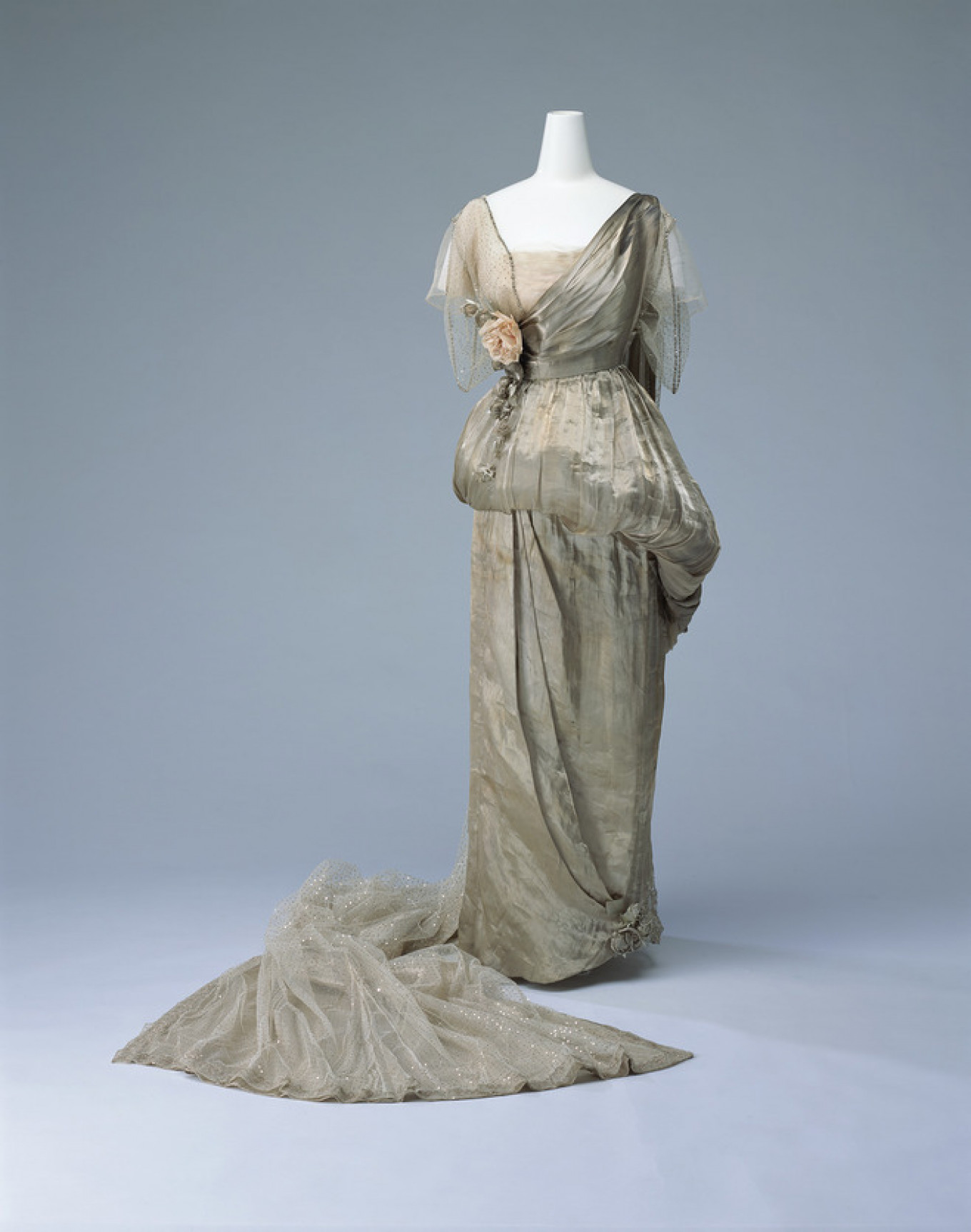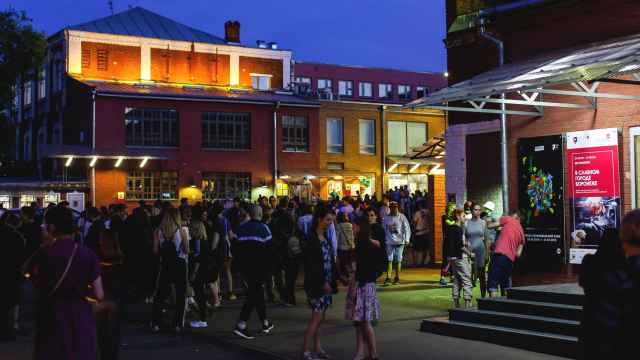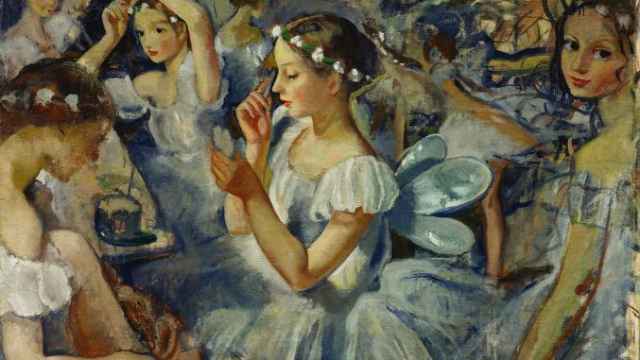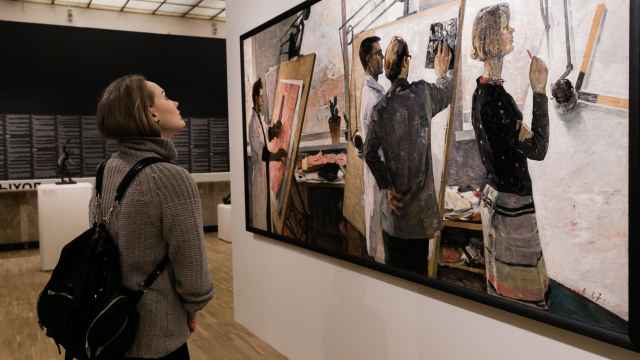Resplendent and dazzling, the exhibition of women’s clothing and jewelry on display at the Kremlin Museum certainly lives up to its name. “Elegance and Splendor of Art Deco” brings together 119 exhibits from the Kyoto Costume Institute as well as more than 50 pieces of jewelry from Cartier and Van Cleef & Arpels.
A crossroads of geographical, cultural and social influences, Art Deco was a unique socio-cultural phenomenon that spanned practically every decorative art of the 20th-century interwar years. The current exhibition at the Kremlin explores both its influence on fashion and design, and how it celebrated and adapted to the new role played by women in society.
The display is housed in the One-Pillar Chamber of the Patriarch Palace and the Assumption Belfry, a suitably impressive setting for the elegant collection of evening dresses and manteaux, cocktail outfits and “robe de style” — a special kind of gala dress from the Art Deco Period.
“We were delighted when the Kremlin museum approached us with their ideas for the exhibition. It’s a great honor to be working with them and to have the beautiful gowns on display to the public,” said Makoto Ishizeki, the curator of the Kyoto Costume Institute, in an interview with The Moscow Times.
The Kyoto Costume Institute possesses arguably the rarest collection of women’s dresses and accessories from the early 20th century. Many of the items on display were restored specifically for the exhibition by institute technicians and have never been exhibited in Japan before, let alone Russia.
“We have two restoration teams at the Kyoto Costume Institute who worked for many months to prepare for the exhibition. It was a labor of love, but also one of great scientific and research interest for us as for other fashion historians.”
Exoticism is everywhere in the exhibition. Combining the culture of ancient civilizations, folk and country traditions and a belief in progress — both technical and social — Art Deco brought together fine craftsmanship with striking, modern styles.
East Meets West
An umbrella term for the enormous range of decorative arts which blossomed in Europe between the first and second world wars, Art Deco took its name from the 1925 International Exhibition of Modern and Industrial Decorative Arts held in Paris.
“Art Deco in general was synthetic: it borrowed from cultures which were only just fully opening to the rest of the world,” said Ekaterina Karavayeva, the director of the Kremlin International Exhibitions Department.
“The decorative motifs and fabrics in the dresses and outfits on display are a mixture of something very traditional — for instance, French fabrics reminiscent of the epoch of Louis VI or VII — but combined with something exotic, such as Japanese motifs or designs from the Russian ballet.”
While Art Deco fashion was both playful and decadent, it also fulfilled a requirement that style should be somehow be timeless and borderless — that outfits should adapt to a whole host of cultures. Art Deco was omnivorous in its appropriation of stylistic and cultural influences.
Items like the 1925 Paul Poiret coat epitomize this. The vivid blue silk velvet coat was designed to be worn over a dress, hanging from the shoulders like a Japanese kimono. Embroidered with gold oriental details, it combines oriental styles with skillful, traditional handiwork.

Women Take Center Stage
By the 1920s, women in many countries had not only finally attained the right to vote, but were also entering previously male-dominated spheres of society. Their wardrobe reflected this dramatic shift in the previous social order. Hemlines shortened, silhouettes softened to allow for movement: fashion pieces were finally truly comfortable to wear.
“It was the first time in the history of European fashion that a woman was at the center of attention. Many of the garments were structured in a way which meant women could dance and move with more fluid movements. It freed them from being the appendage to a man,” said Karavayeva.
The influence of this immense social upheaval is tangible in the new accessories women paired their outfits with. Women could smoke socially, which influencing jewelry: they carried delicate cigarette cases in small evening bags. “In this era a woman would feel naked without jewelry — that her outfit was not complete. In 1925 costumes and jewelry were first shown together at the exhibition of decorative arts in Paris, which influenced our idea,” said Karavayeva.
Meanwhile the cosmetics industry was rapidly developing: a vanity case with powder and lipstick became the indispensable attribute of a modern woman. Often they were lavishly decorated with oriental designs and dazzling jewels, such as the 1927 Cartier “Chinese vase” vanity case inlaid with onyx, emeralds, diamonds and sapphires.
Dresses became shorter so that women’s feet were finally shown off in public. This influenced the design of shoes which became much more lavish. One of the exhibits features an astonishing selection of bespoke jewel-encrusted heels which women would select for their shoes from a designer’s show room.
Out of the many stunning dresses on display, Karavayeva feels is one in particular stands out: a 1925 black silk “robe de style” designed by Lanvin which holds court towards the end of the exhibition.
“On the one had it resembles the French dresses of the 19th century because it’s almost corseted, but on the other hand, the motifs are from the Aztec calendar. The front of the dress resembles a jewelry piece, with precious stones of different colors. It’s decadent, it embraces modernity: it’s the spirit of the epoch,” said Karavayeva.
A Russian exhibition of European dresses and jewelry from a Japanese collection is perhaps the most fitting way to pay tribute to a movement which transcended cultural and social boundaries.
“Today the world still utilizes the principles of Art Deco,” said Karavayeva. “We still appropriate inspiration and traditions from different cultures. That’s what unites us. It’s also what still draws us to the Art Deco as an epoch.”
“Elegance and Splendor of Art Deco” runs through Jan.11 at the Kremlin Museum. Moscow State Kremlin. Metro Alexandrovsky Sad. kreml.ru
A Message from The Moscow Times:
Dear readers,
We are facing unprecedented challenges. Russia's Prosecutor General's Office has designated The Moscow Times as an "undesirable" organization, criminalizing our work and putting our staff at risk of prosecution. This follows our earlier unjust labeling as a "foreign agent."
These actions are direct attempts to silence independent journalism in Russia. The authorities claim our work "discredits the decisions of the Russian leadership." We see things differently: we strive to provide accurate, unbiased reporting on Russia.
We, the journalists of The Moscow Times, refuse to be silenced. But to continue our work, we need your help.
Your support, no matter how small, makes a world of difference. If you can, please support us monthly starting from just $2. It's quick to set up, and every contribution makes a significant impact.
By supporting The Moscow Times, you're defending open, independent journalism in the face of repression. Thank you for standing with us.
Remind me later.






